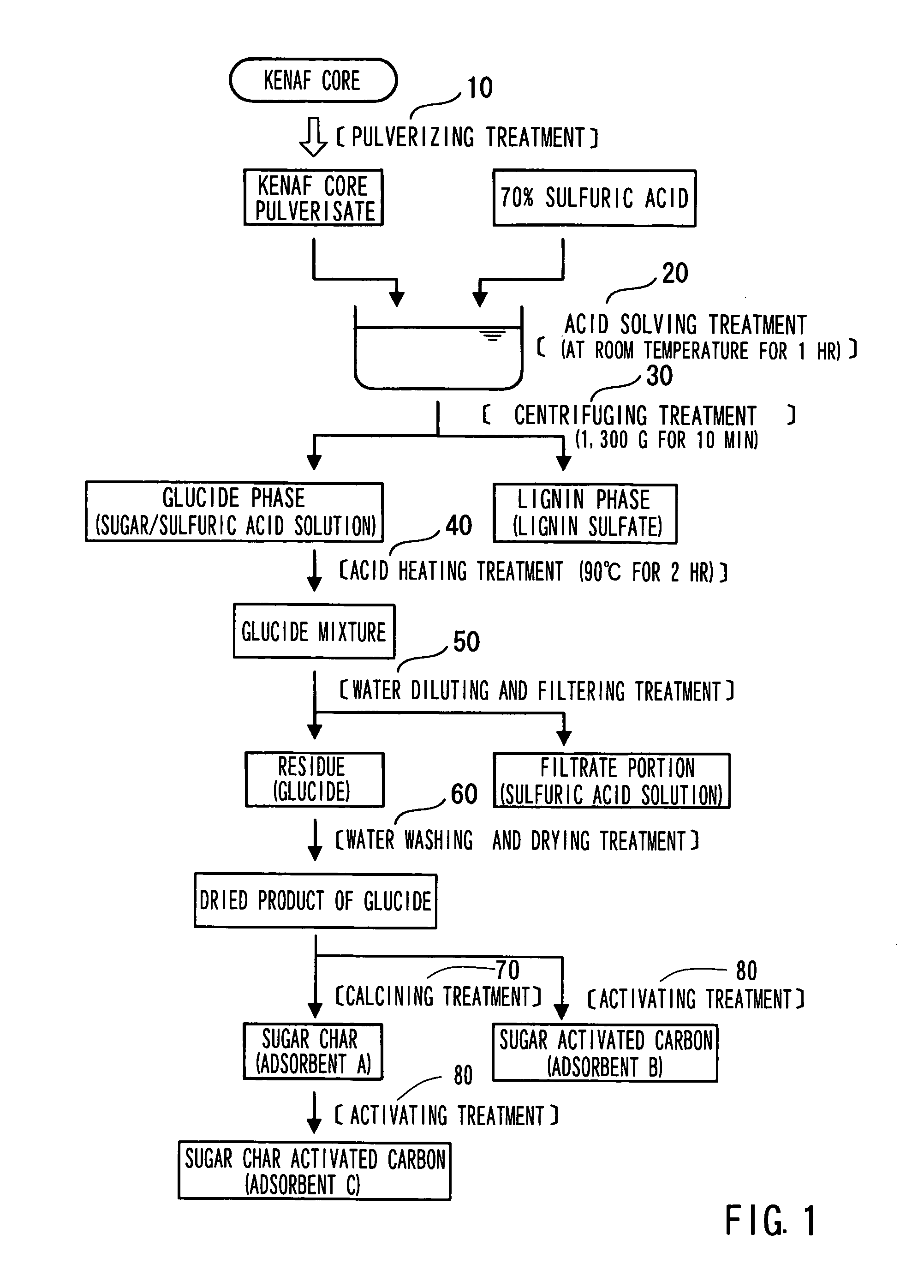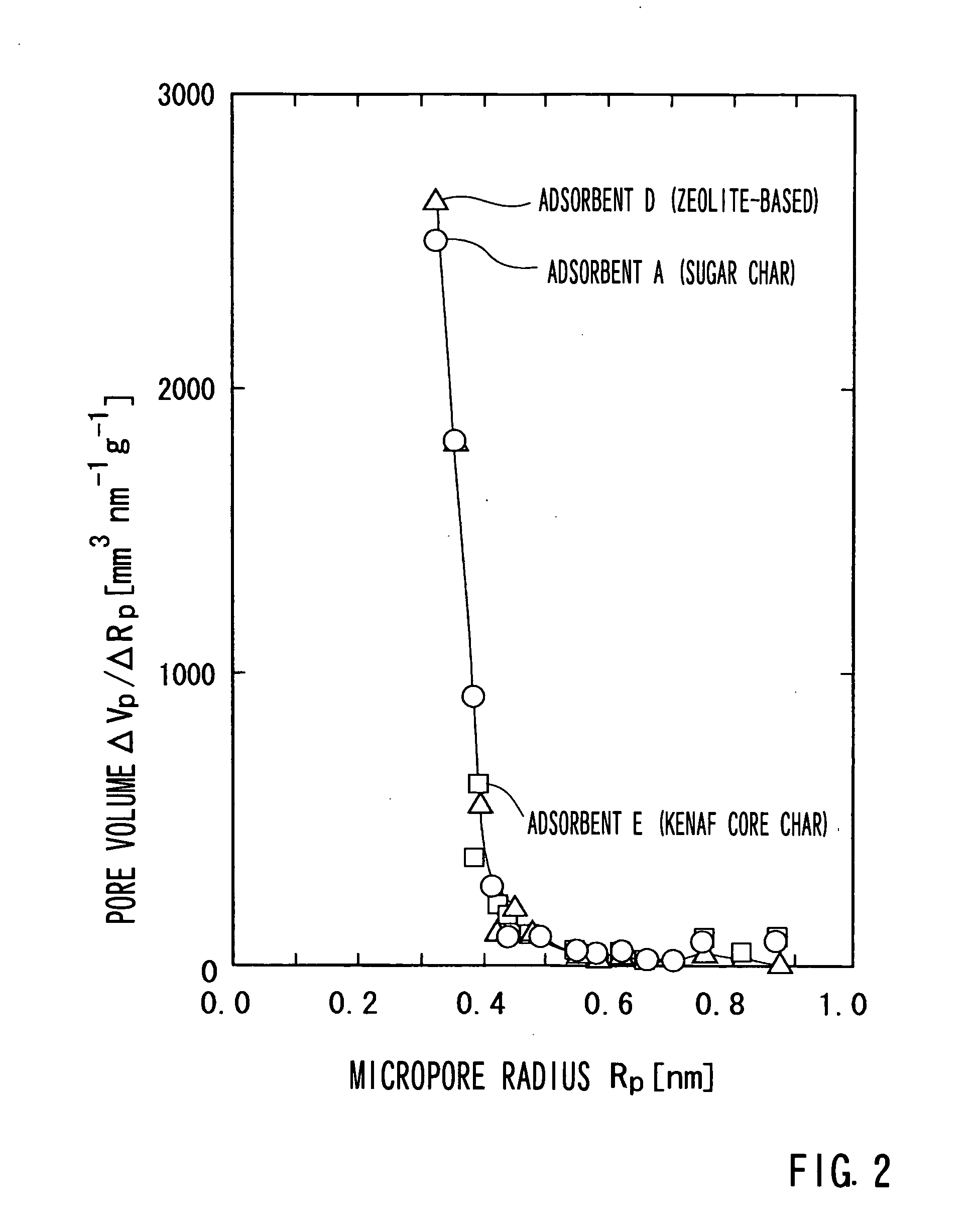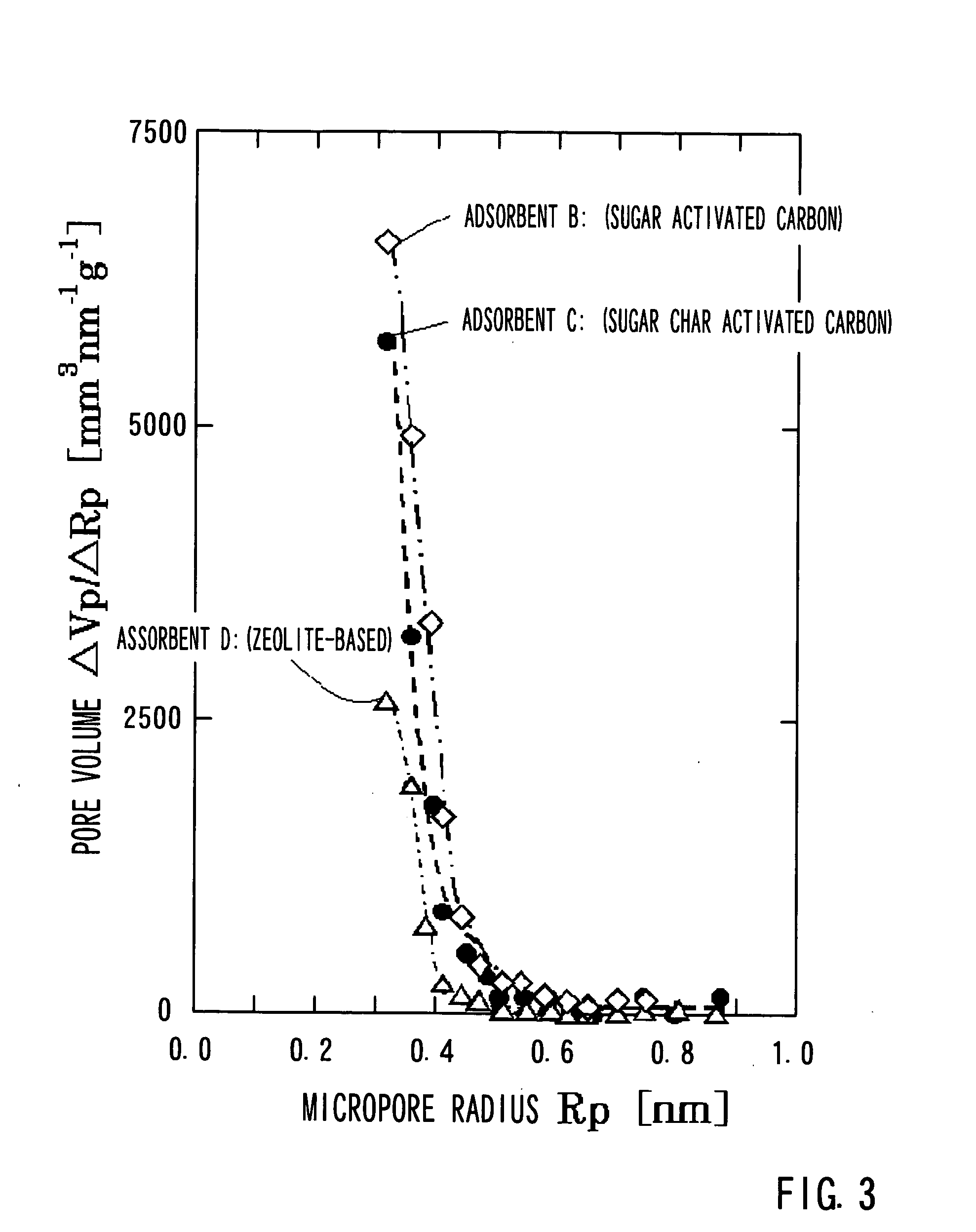Adsorbent and process for producing adsorbent
a technology of adsorbent and adsorption process, which is applied in the field of adsorbent, can solve the problems of low adsorption selectivity of mixed gas, a number of pores in a particle of char, and a limitation of the production cost, and achieve excellent adsorption performan
- Summary
- Abstract
- Description
- Claims
- Application Information
AI Technical Summary
Benefits of technology
Problems solved by technology
Method used
Image
Examples
example
[0055] Adsorbents A to C, F, and G, obtained by sequentially performing the above-mentioned treatments were evaluated on indices related to their adsorption performance. For this evaluation, measurements were performed of indices relating to the adsorption performance such as distribution of micropores, total volume of micropores, specific surface area of the adsorbent, and measurement of actual adsorption amounts for methane and butane. Hereinafter, one example of the results of such measurements will be described. Note that FIGS. 2 and 3 are graphs that illustrate respective relationships between pore size (micropore radius) of the adsorbents A to C and pore volume. FIG. 4 is a graph that illustrates a relationship between adsorption equilibrium pressure and methane adsorption amount with respect to adsorbents A to C. FIG. 5 is a graph that illustrates a relationship between adsorption equilibrium pressure and butane adsorption amount with respect to adsorbents F to H.
[0056] Furt...
PUM
| Property | Measurement | Unit |
|---|---|---|
| Fraction | aaaaa | aaaaa |
| Pore size distribution | aaaaa | aaaaa |
| Weight | aaaaa | aaaaa |
Abstract
Description
Claims
Application Information
 Login to View More
Login to View More - R&D
- Intellectual Property
- Life Sciences
- Materials
- Tech Scout
- Unparalleled Data Quality
- Higher Quality Content
- 60% Fewer Hallucinations
Browse by: Latest US Patents, China's latest patents, Technical Efficacy Thesaurus, Application Domain, Technology Topic, Popular Technical Reports.
© 2025 PatSnap. All rights reserved.Legal|Privacy policy|Modern Slavery Act Transparency Statement|Sitemap|About US| Contact US: help@patsnap.com



